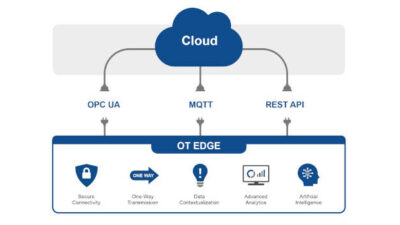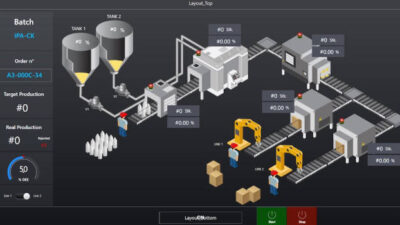Software-as-a-service (SaaS) is like that stylish car you notice once, and then start seeing it everywhere. With SaaS, the appeal is not having to buy the “car,” but paying only to drive it. SaaS also has unlimited passenger capacity. The fundamental concept isn't new. SaaS is based on the original time-share model created when computers first went commercial in the 1950s.
Software-as-a-service (SaaS) is like that stylish car you notice once, and then start seeing it everywhere. With SaaS, the appeal is not having to buy the “car,” but paying only to drive it.
SaaS also has unlimited passenger capacity.
The fundamental concept isn’t new. SaaS is based on the original time-share model created when computers first went commercial in the 1950s. That model was retooled as the hosted application service provider (ASP) strategy of the 1990s, which never gained the anticipated traction. And while SaaS won’t revolutionize software delivery anytime soon, it definitely has its “wheels.”
“Software-as-a-service has been under the radar,” says Ben Pring, a research VP with Stamford, Conn.-based Gartner . “That’s changing now due to exploitation of the Internet as a development and delivery platform, and the huge maturation of its underlying transformation layer as an industry-strength network.”
The current SaaS iteration began in the late 1990s—most noticeably capturing widespread mindshare with the launch of Salesforce.com in 1999. Major brands today include NetSuite, RightNow, and QuickArrow, but the list of new entrants is rapidly expanding as new ventures seek opportunities to address specific business needs—many targeting outward-facing applications such as CRM and procurement, and niche user needs “on the fringe” of the enterprise, like content management and contract-labor management that fall outside the main focus of the corporate IT system-of-record.
The certainties
“There’s a sea change occurring,” says Pring. “Software-as-a-service is less expensive, easier to manage, and more agile and flexible than the traditional on-premise licensing model,” which is characterized by sizeable, upfront licensing fees coupled with equally sizeable implementation service costs, and high ongoing maintenance. Equally attractive is time-to-value, with a 90-day time-to-benefit not uncommon. Though Gartner estimates SaaS currently represents only 6.8 percent of the software market, Gartner analysts project it to grow to 25 percent by end of 2011—to $19 billion worldwide.
The SaaS model is fundamentally characterized as a single instance of an externally hosted code base with multiple customers (“multi-tenancy”) paying a usage fee, much like a telephone bill. The vendor’s ease of maintaining a single code base, delivering the service over the Internet, and apportioning costs based on usage is what enables an attractively low total-cost-of-ownership to end users.
Ranga Jayaraman, CIO of Hitachi Storage Technologies and a San Jose, Calif.-based site executive, employs the utility metaphor to describe the benefit of the SaaS model in terms of his company’s component procurement process among a vast network of suppliers—a collaborative application space especially well suited to SaaS.
“If you wanted to get connected, you wouldn’t build your own telephone network, but rather, would tap into a common voice services infrastructure,” says Jayaraman. “In terms of active trading services among numerous companies in a supply chain network, if each tries to address the issue individually, it becomes unwieldy. The advantage of SaaS is that it enables tapping into the network.”
Hitachi uses E2Open , a provider of supply chain management collaboration software, for procurement SaaS. “We collaborate with our parts suppliers using E2Open,” says Jayaraman. “We send them our demand statements, and they tell us what they can supply. And then we send them our purchase orders.”
E-procurement is one of three SaaS applications at Hitachi—the other two being expense accounting and collaboration and information exchange with suppliers and channel partners.
On-ramp to on-demand
“We are seeing a lot of interesting on-demand software projects occurring on the edge of the enterprise, with externally facing applications—in the area of procurement, collaboration, transportation, and warehouse management,” says Beth Enslow, senior VP of enterprise research at Aberdeen Group . “They’re all edge processes ideally suited to on-demand.”
In surveying more than 600 companies, Aberdeen found CIOs are increasingly taking more of a portfolio approach that includes SaaS applications in the mix.
“They make strategic investments in SAP and Oracle and maximize their ERP systems where they will enable competitive differentiation, but surround ERP with on-demand applications that don’t consume IT department resources,” Enslow asserts. The goal is to address end user needs quickly, delivering value in three to six months—without diverting IT’s core focus on the enterprise.
Some ERP vendors have declared their SaaS strategies, but with substantial shades of gray. For one, NetSuite markets itself as an ERP vendor, but the ERP rubric applies more to its financial and HR functionality than to robust manufacturing production applications. And while SAP, Oracle, and Microsoft have declared SaaS strategies and are engaged in various stages and hybrid flavors of the delivery model, SaaS isn’t likely to replace traditional on-premise site licensing in their strategies any time soon.
Glovia Services is perhaps the chief production-based ERP system vendor to announce an SaaS version of its software (See Industrial goods maker takes ERP SaaS plunge , May, page 43).
“Every software vendor today talks about its SaaS strategy,” says Rob Bois, a director of customer management for Boston-based AMR Research . “Maybe half the time it is truly SaaS. Vendors are offering hybrids, where the application is multi-tenant, but the database is not. Or vice versa.
“There can be exceptions to multi-tenancy, as the buyer doesn’t usually care about the underlying technology,” continues Bois. “But there should be no upfront costs: You pay for what you use. If a vendor can offer that without multi-tenancy, more power to them. We tell our customers to pay attention to pricing rather than the architecture. If a vendor says they’re not multi-tenant, you might want to scrutinize the situation a little harder, looking for hidden costs. In a lot of cases it fundamentally comes down to total cost of ownership.”



